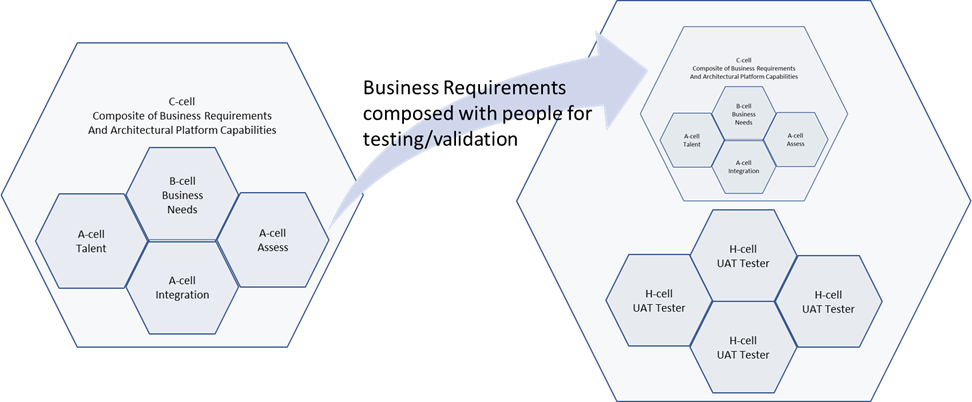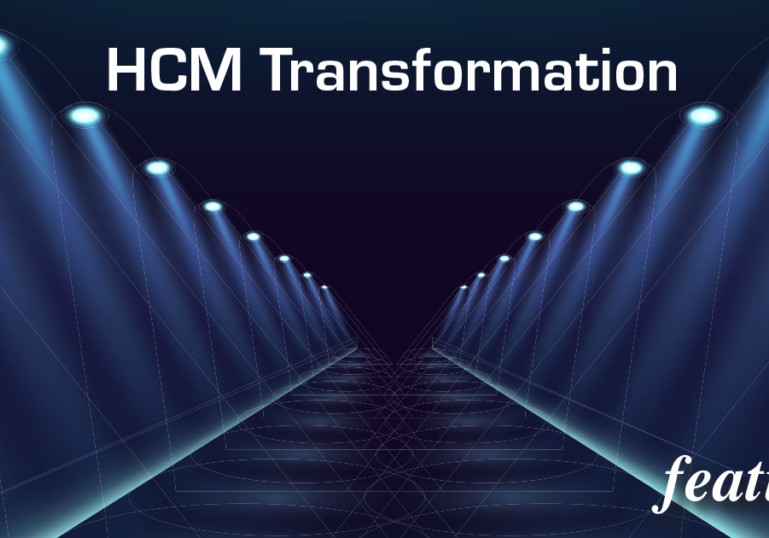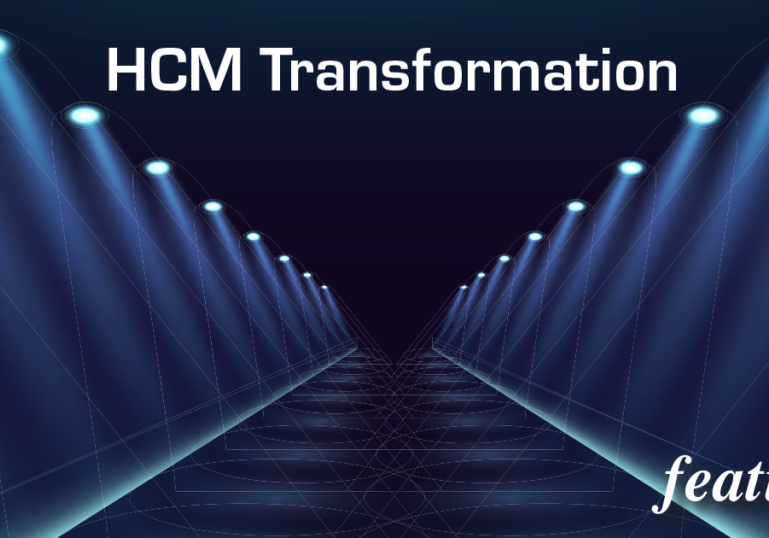After a year of relentless change in our work environments, enterprises of all sizes, challenged by unprecedented events, have adapted in unprecedented ways. Remote work is one of our most visible and ubiquitous adaptations-once largely an exception and somewhat discouraged, it became the new normal almost overnight. Both the enterprises and their employees had to adapt to this new environment. Along the way, HR and IT organizations have expanded their presence to support the employees and enterprises. In short, from the individual contributor through to each organizational unit to the whole of the enterprise, agility has been injected into our corporate DNA. IT organizations stepped up, introducing or expanding collaboration & virtual meeting software, while HR departments simultaneously crafted policies fitting the new environment and bringing Concepts, Practices and Tools (CPT’s) from outside HR to measure the effectiveness of the efforts.
While the forced march was unsteady, a period of relative equilibrium has set in, allowing us to review and even plan navigation of this new normal. Stewart Butterfield, CEO of Slack, was definitely challenged along with the entire company, through those first months. His reflection in Harvard Business Review is an apt encouragement:
Covid-19 has created an opportunity for us and others to become more agile, to take on changes that once seemed daunting, to reimagine organizational culture, to rethink work plans and productivity, to learn from and rapidly correct mistakes, and to reposition for future growth. Perhaps most important, Slack has refocused on our core goal [emphasis added]–to help our customers work more efficiently and more productively.
New CPT’s
Initial responses to shifts in our work environments were originally expected to be needed for only a few weeks; in retrospect we know that the environment continued to shift for months and will continue to do so for at least another year. Corporate practices have certainly extended work from home policies, but have also added telephone and Internet service as requisite benefits for those who work from home. Flexible work schedules have become—more flexible—as parents hold school from home or former business travelers conduct business across time zones from home instead of flying across countries and continents to do so.
We’ve observed in the past that new Practices and Tools tend to follow after a new Concept. The concept of a highly-contingent workforce, for instance, led to practices and software implementations that accommodated scheduling, tracking, and paying that workforce. That progression of Concept->Practice->Tools diverged in the current climate.
We note though that in the past year, practices shifted suddenly and multiply, while tools were unavailable within the HR domain to meet these changes. Meeting and communication software filled in the sudden gaps of remote work while still needing to work in teams. Health tracking (temperature and contact tracing), often by spreadsheet, was much needed in many industries. These worked but were not plugged into the enterprise IT infrastructure for monitoring and governance. 12 months in, formal ERP integration is being announced in some cases.
The concepts that are normal predecessors weren’t defined in advance of the adaptive practices and tools this past year, but have emerged from the agile responses enterprise human resources (people) have displayed. We’ve seen individuals dynamically form teams, remote from one another, using new tools, in order to fulfill constantly emerging business requirements. This agility and continuous delivery reflect two recent trends in software architecture and development practices. The human side of software development underwent a rapid evolution between 2010 and 2020. Companies like Amazon and Netflix pioneered the deployment of small, agile teams delivering functionality at a rapid pace. These “two-pizza” teams, bounding the size of the team into how many contributors two pizzas would feed, had lower management overhead and greater capacity to communicate amongst the team contributors. With an overall strategic focus defined by the enterprise, a lead within the team collects business requirements from stakeholders and decomposes those requirements into rapidly developed software functionality, each of short “sprints” in duration. These functional components are continuously tested and merged into the overall software product so that rapid feature extensions are available.
The Cellular Enterprise
Asanka Abeysingh , Chief Technology Evangelist at WSO2, has applied these observations, and extended them for purposes of digital alignment/transformation, into a multidimensional perspective encompassing people, processes, and technology as “The Cellular Enterprise.” This concept of the cellular enterprise isn’t intended to supplant any formal Organization Development discipline, but rather to reflect on characteristics displayed at highly-performant organizations. While Abeysingh notes five different cell types, we will focus on four with a use case:
- H-Cell (or HR-Cell) a cell (team) of human resources
- B-Cell a business function or requirement presented by stakeholders/customers
- D-Cell a development cell delivering software functionality to meet business requirements
- C-Cell a composite cell that can encompass and represent any combination of cell types
- A-Cell an architecture cell represented by software delivered by the enterprise or selected vendors
The demand for HR integration services increased in 2020. A segment of this increase did relate to new tool adoption within enterprises, such as provisioning Slack accounts for new hires. The majority of integrations in that time, from Bennett Reddin’s perspective, were standard categories such as Recruitment, Assessment, Background Check, HR, and Payroll. Although the “normal” integrations were implemented, the volume of integrations was higher than in 2019, with 132 implementations performed. Reviewing those implementations, a common “Cellular Enterprise” pattern has been standing out. In a most recent case, the formation and combination of teams across a global food product provider (whom we’ll refer as “ABC Worldwide”), an ERP-scale recruitment platform (“RP”), an assessment platform (“AP”), and the integration services provider (“IP”) exhibited all of the characteristics being discussed.
Business Cells (requirements) had already been established at ABC Worldwide prior to selection of their Assessment Platform. Teams formed on the Assessment side to configure already-established architecture to meet those business needs, and on the Integration side to provision a standard bi-directional flow of data between systems. In addition, the Recruitment Platform required extensions provided by yet another team interfacing with the business stakeholders.
In the span of three weeks, cells of humans, business requirements, architecture, and development/deployment formed, delivered, and reformed in numerous combinations to deliver the overall solution. These teams included two to five people on a normal sprint. At times developers from the Recruitment and Integration vendors would “huddle” to work out data flow, forming a composite cell of just the two. More often though the composite cell would contain project managers and business stakeholders in addition to development contributors. In all cases, communication across cells has been critical. The project managers and business stakeholders are instrumental reducing friction by communicating tightly bounded goals & requirements for each iteration of delivery.

Team composition expanded significantly as ABC Worldwide entered User Acceptance Testing. Participants in UAT formed a larger composite cell in testing, and while they never worked directly with the Integration or Assessment Platform teams, the mutual context to achieve business requirements was shared in their delivery as well. In this case, UAT exposed a gap in the understanding & thus delivery of some business requirements. This resulted in the temporary decomposition of the UAT team, and recomposition of the business requirements team, along with vendor development team members.
In this recomposition, the business requirement (desired behavior for additional assessments for a candidate) was clarified, capacity for the Assessment Platform to meet this need, and reconfiguration of the Integration Platform to provide the expected results, were achieved in a short sprint. Once again, the cross-disciplinary team decomposed, allowing the UAT team to recompose and complete testing of the business requirement.

None of the “cellular activity” was pre-planned or orchestrated, but occurred instead organically. Including UAT, people on the project numbered under a dozen, combining and recombining in forms that met iterative but connected goals until project completion. Each team formation exhibited all of Abeysingh’s standard set of Cellular Enterprise characteristics:
- Decentralized approach – With tight communications in a small team, there was no need for top-down supervision
- Autonomy – with mutual context and goals across teams, focus could remain on the most important deliverables for each individual team
- Independent work units – deliverables were sized and worked in appropriate sprints
- Flexible, adaptive, and frictionless – when new business requirements were exposed, the teams could respond quickly to meet those requirements
- Agility at multiple levels, structured coordination – Project management, configuration & development, UAT teams worked in self-directed ways to deliver on intermediate goals building to shared understanding of final delivery
The characteristic traits of Cellular Enterprise map clearly to engagement-based enterprises, such as technology vendors delivering and configuring a solution. Delivery teams will transition to new projects & engagements, while another cell of account managers and support resources continue the relationship with a client. It was previously less clear how well traditional enterprises would organically compose & decompose H-cells of resources to accommodate constantly-changing business needs. Given our enterprise needs to pivot as gracefully as small organizations through the coming year, encouragement of “Cellular Enterprise Thought” will be beneficial in managing through and thriving in business.
References
Abeysinghe, A. (2020, June 29). The Cellular Enterprise. Retrieved from Forbes: https://www.forbes.com/sites/forbestechcouncil/2020/06/29/the-cellular-enterprise/?sh=4574d57e6832
Abeysinghe, A. (n.d.). Connecting Humans and Technology. Retrieved from LinkedIn: https://www.linkedin.com/in/asankaabeysinghe/
Butterfield, S. (2020, July-August). The CEO of Slack on Adapting in Response to a Global Crisis. Harvard Business Review, p. 35.
Finnegan, M. (2021, January 25). Microsoft to integrate Teams with SAP as partnership expands. Retrieved from ComputerWorld: https://www.computerworld.com/article/3604734/microsoft-to-integrate-teams-with-sap-as-partnership-expands.html
Freemantle, P. &. (2020, November 13). Cell-Based Architecture. Retrieved from GitHub: https://github.com/wso2/reference-architecture/blob/master/reference-architecture-cell-based.md
Reddin, B. (n.d.). Chief Technology Officer. Retrieved from LinkedIn: https://www.linkedin.com/in/bennett-reddin-79516/





